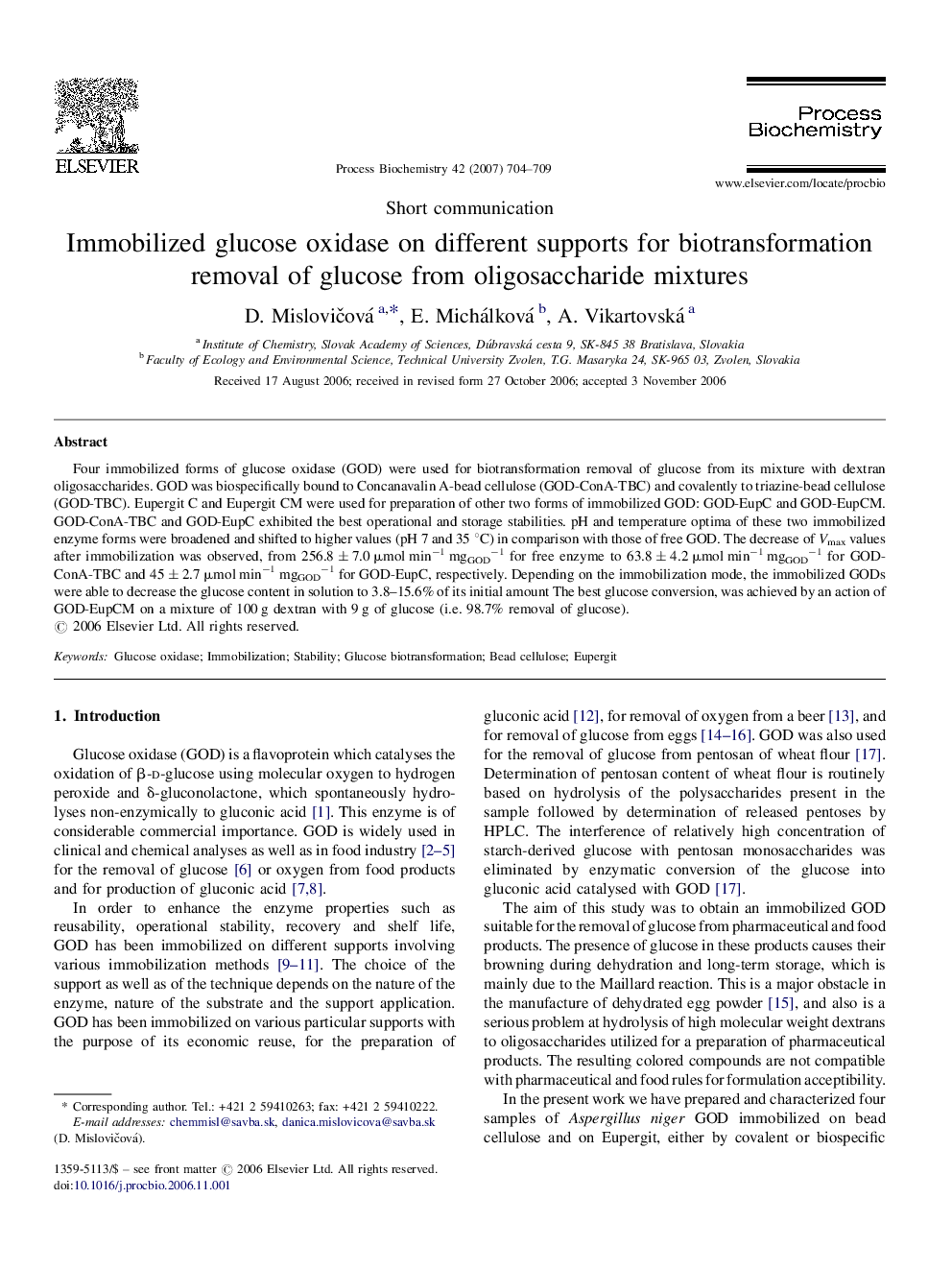| Article ID | Journal | Published Year | Pages | File Type |
|---|---|---|---|---|
| 36030 | Process Biochemistry | 2007 | 6 Pages |
Four immobilized forms of glucose oxidase (GOD) were used for biotransformation removal of glucose from its mixture with dextran oligosaccharides. GOD was biospecifically bound to Concanavalin A-bead cellulose (GOD-ConA-TBC) and covalently to triazine-bead cellulose (GOD-TBC). Eupergit C and Eupergit CM were used for preparation of other two forms of immobilized GOD: GOD-EupC and GOD-EupCM. GOD-ConA-TBC and GOD-EupC exhibited the best operational and storage stabilities. pH and temperature optima of these two immobilized enzyme forms were broadened and shifted to higher values (pH 7 and 35 °C) in comparison with those of free GOD. The decrease of Vmax values after immobilization was observed, from 256.8 ± 7.0 μmol min−1 mgGOD−1 for free enzyme to 63.8 ± 4.2 μmol min−1 mgGOD−1 for GOD-ConA-TBC and 45 ± 2.7 μmol min−1 mgGOD−1 for GOD-EupC, respectively. Depending on the immobilization mode, the immobilized GODs were able to decrease the glucose content in solution to 3.8–15.6% of its initial amount The best glucose conversion, was achieved by an action of GOD-EupCM on a mixture of 100 g dextran with 9 g of glucose (i.e. 98.7% removal of glucose).
